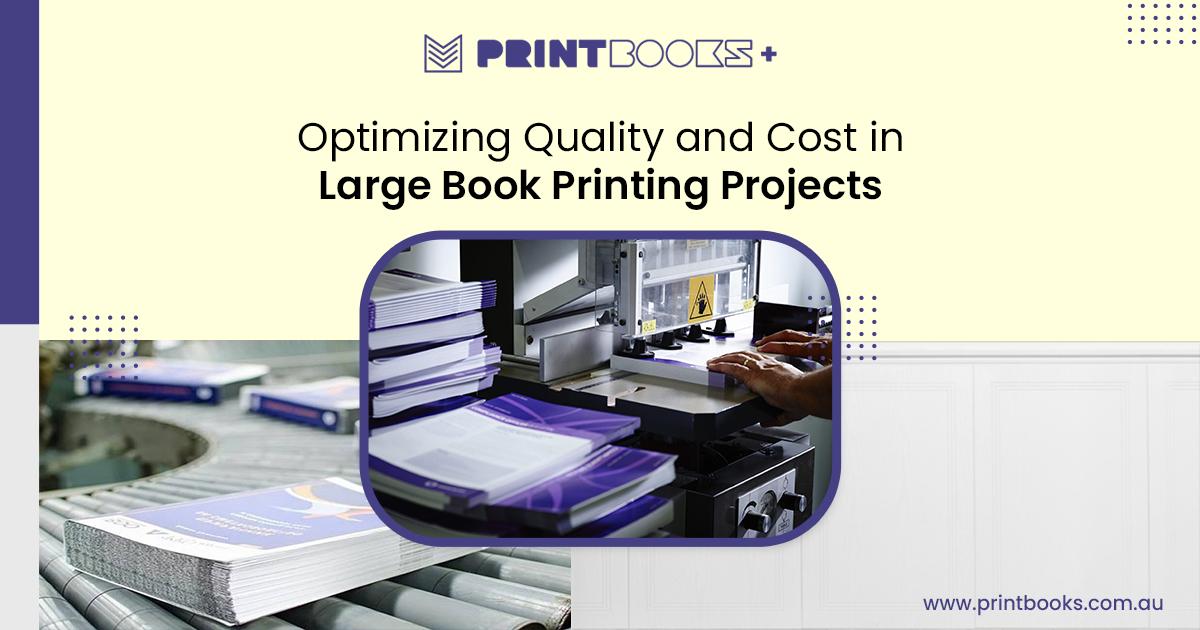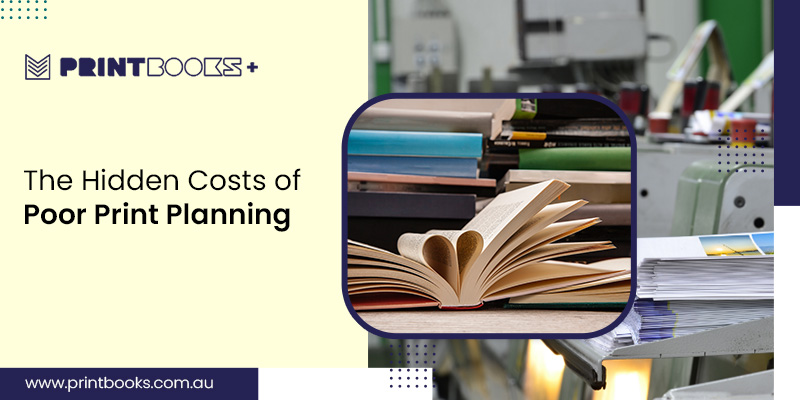Optimizing Quality and Cost in Large Book Printing Projects

Are you stuck choosing between impressive print quality and staying within budget?
If you are in charge of a large-scale book printing project whether for publishing houses, corporate training materials, educational institutions or content-based organizations you have probably wrestled with this trade-off.
You want your book to look and feel professional but the costs of premium paper, high-end binding or color printing can skyrocket quickly. Worse, small missteps in planning can turn what seemed like a straightforward job into an expensive learning experience.
But what if we told you this: you don’t have to sacrifice quality for cost or vice versa.
The key lies in a carefully engineered process that covers everything from prepress preparation to post-print logistics. And throughout this guide we will explore that process, unpack each decision point and share how the most successful brands save money without cutting corners.
Let’s begin.
The Hidden Costs of Poor Print Planning

It’s easy to think that your printer holds the power when it comes to cost. But in reality, many of the biggest cost inefficiencies come from your end.
Here are a few real-world examples:
- A last-minute change in paper size caused a publisher to reformat an entire layout, delaying timelines by 2 weeks and incurring extra design charges.
- An overlooked bleed margin error resulted in 5,000 reprinted covers.
- An uncoordinated binding style led to higher shipping weight — increasing freight charges by 22%.
The lesson? Cost optimization starts before a single page is printed.
Print Run Planning
When we talk about cost efficiency, it’s natural to think that printing in bulk reduces the unit cost and that’s true in many cases. But what most people miss is the full lifecycle cost of those extra copies.
Let’s break it down:
- Offset printing is cost-efficient for large print runs (10,000+), but the setup cost is high. Once set up, it delivers high speed and consistency.
- Digital printing, on the other hand, is better for smaller batches or region-specific content, and allows for quicker turnarounds with lower setup costs.
But ask yourself:
- Do you have accurate sales data to support a 25,000-copy print run?
- How much will storage, handling, and obsolescence (outdated content) cost you for unsold inventory?
Smart publishers today use hybrid print models — combining a large offset print for evergreen content and digital reprints for niche or updated editions. This way, you avoid overprinting while still benefiting from volume pricing.
Materials Matter
The paper you choose, the ink you use, and the finish you apply — all contribute significantly to both perception and price. But here’s the trap: “better quality” doesn’t always mean “more expensive.”
For example:
- A 100 GSM uncoated paper may feel premium and be easier on the eyes than a 130 GSM glossy paper, especially for reading-intensive books.
- Matte lamination on covers gives a classy feel but can show fingerprints; soft-touch aqueous coating can offer a similar effect at a lower cost and with better durability.
- Color printing is expensive. Could you achieve the same impact with spot color printing or duotone techniques?
Binding options matter, too:
- Perfect binding is suitable for most commercial books (cheaper and efficient).
- Case binding (hardcover) gives a premium look, but also increases shipping weight and per-unit costs.
- Saddle stitching (for thinner books) may be underutilized — it’s cost-effective and great for short manuals or reports.
Before finalizing materials, talk to your printer about performance-tested combinations — they often have insights based on thousands of runs that can save you both cost and complaints.
Prepress Optimization
This is one of the most underrated areas in any book printing project. The quality of your prepress files and how well they are prepared and optimized for printing can make or break your budget.
Why is this stage so important?
- Low-resolution images, incorrect color profiles, or inconsistent margins often lead to reproofing, delays, and even expensive reprints.
- PDFs not set to printer specifications can distort layouts, cut off elements, or misalign gutters.
Here’s what you should always ensure:
- Image resolution is 300 dpi or higher for print quality.
- Fonts are embedded or outlined to prevent substitution issues.
- Color profiles are set to CMYK, not RGB, as RGB does not translate correctly in print.
- Bleed and safety margins are respected — usually 3mm bleed and 5mm safety area inside trim lines.
Ask for a pre-flight check and soft/hard proofs. It might add a day to your timeline, but can save thousands in errors.
And yes — always approve a dummy version of your book (blank but bound) to test paper weight, binding integrity, and spine width.
Don’t Just Pick the Cheapest Bid
Would you pick a vendor just because they offered the lowest quote? Think again.
Reliable print partners provide more than just ink on paper — they offer flexibility, quality checks, and logistics support. And here’s something to consider: some vendors specialize in educational books, while others excel at luxury coffee-table books.
Choosing a specialized printer often means fewer errors, better finishing, and faster delivery — all contributing to lower long-term costs.
And don’t be afraid to negotiate based on data. Share your forecast, discuss reprint frequency, and explore bundled services (like warehousing or dropshipping) for added value.
Logistics and Distribution
So your books are printed. Now what?
A book isn’t valuable until it’s in the hands of the reader. And getting it there is often one of the most expensive — and overlooked — parts of the process.
Here’s what you should think through:
- Will you be shipping internationally? Then print centers closer to the delivery zone may drastically cut freight costs.
- Are you warehousing books for future orders? Consider the cost per pallet, climate control, and rotation schedule.
- Could you use a Print-on-Demand (POD) model in certain geographies to serve small markets without bulk stock?
Even your choice of binding and paper weight impacts shipping. A heavier book = higher courier cost.
Collaborate with logistics partners early. Get a realistic cost projection for packaging, shipping, returns, and last-mile delivery. And don’t forget to factor in import duties and customs documentation for cross-border shipments.
Strategic Thinking is Your Best Asset
Optimizing quality and cost is not about picking one over the other. It’s about making intentional, informed choices at every step — from content layout to post-print distribution.
So, what’s your next step?
Are you analyzing the outcomes of your last print project? Or gearing up for a new one?
If so, are you asking the right questions that balance design, logistics and budget not just for today, but for the shelf life of your book?
Because in book printing, what you plan today is what your audience reads tomorrow.
Let’s make sure it’s not just good but exceptional.
Ready to print smarter?
Partner with experts who understand every inch of the process from layout to logistics. Explore print solutions with PrintBooks Australia and bring your next big project to life with unmatched precision and professionalism.
